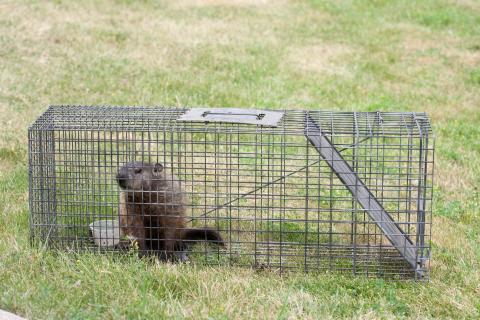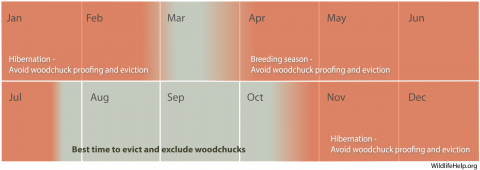You can trap a woodchuck using a wire cage trap or wooden box trap with minimum dimensions of 10” x 12” x 32”, either single or double door, with the double considered very effective when set as a pass through trap. Set traps at main burrow entrances or along major travel lanes. Use trap covers during hot weather to provide shade as woodchucks are highly vulnerable to heat stress. Bait the trap with apple slices, cantaloupe, other fruits or vegetables such as carrots and lettuce, or use professional paste baits. Change or refresh baits daily.
When food is abundant, woodchucks may not respond to bait. In that case, wire the trap door and bait the trap. After the woodchuck takes the bait once or twice, add new bait and set the trap. Unbaited cage traps set near openings with boards or logs to guide the woodchuck are also effective.
Since woodchucks are active during the day, set the trap in the morning and close or remove it during the night; this will minimize the likelihood of catching a non-target animal that is active at night. Check all traps twice daily, morning and evening, so that captured animals may be quickly removed.





